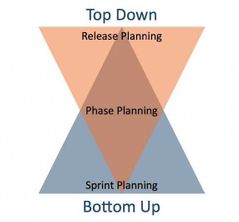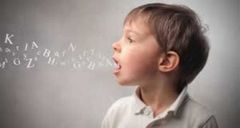![]()
![]()
![]()
Use LEFT and RIGHT arrow keys to navigate between flashcards;
Use UP and DOWN arrow keys to flip the card;
H to show hint;
A reads text to speech;
14 Cards in this Set
- Front
- Back
- 3rd side (hint)

Psycholinguistics |
The study of the mental representation and processes involved in language use, including the production, comprehension and storage of spoken and written language. |
|
|
|
. |
. |
|
|
|
The study of the mental representation and processes involved in language use, including the production, comprehension and storage of spoken and written language |
Psycholinguistics |
|
|

Top-down |
Processing guided by information flow from higher levels. |
Eg. Sentence interpretation to lower levels. |
|

Microplanning |
As well as sorting out the type and order of speech acts in macroplaning, speakers carry out detailed planning of each individual speech act. |
This involves determining the perspective and information structure that is the most appropriate for given speech act and deciding what should be highlighted as new or topical information. |
|

Grammatical encoding |
Important aspect of taking the message generated by the conceptualiser and turning it into language. |
Where the speaker uses their (implicit) knowledge of grammar to create sentence structures that will convey a message. |
|

The language acquisition device |
This is a purported instinctive mental capacity which enables an infant to acquire and produce language. |
|
|

Behaviourist theory |
Children imitate the adults, so their correct utterances are reinforced when hey get what they want or are praised. |
The principal author of this theory was Skinner. Here it is presented the positive and negative reinforcement. |
|

Cognitive theory |
Language is just one aspect of a child’s overall intellectual development. |
One of the authors of this theory about language acquisition was Piaget. |
|

Innateness theory |
Noam Chomsky focused on the impoverished language input children receive.It’s really common to see situations where adults don’t typically speak in grammatically complete sentences. So child only take some parts as a small sample of language. |
Children must have an inborn faculty for language acquisition. |
|

Interaction theory |
This theory emphasizes the interaction between children and their parents. |
The language exists for the purpose of communication and can only be learned in the context of interaction with people who want to communicate with anyone else.Piaget and Bruner suggest that the language behavior of adults talking to children is specifically adapted to support the acquisition process. |
|

The impact of psycholinguistics approaches in school situations |
The teaching of a second language in the classroom is known as a great adventure for teachers within the field of English (or even any other language) in some way children are not born with the meanings of the words they hear from adults, however the need of communication becomes present (from a very early age) regardless of children don’t think rationally to speak with an adult, this happens naturally, as it happens with the acquisition of the language with over the years. |
|
|

The impact of psycholinguistics approaches in school situations p. 2 |
The theories about the acquisition of language are adapted to the differences with respect to the ways of learning of each human being that is why it is advisable not to stop applying the strategies and methods in each of the language classes. Many authors indicate that compensation or feedback in study questions are effective for a better psycholinguistic development in the student, in the same way the application of strategies such as input and out put are opportune for learning new topics so that students can learn how to acquire the language (for example by using keywords or using only a tense) and also how to use the newly acquired knowledge in the social context (for example, converting the words into another tense). |
|
|

The impact of psycholinguistics approaches in school situations p. 3 |
Activities such as expositions, readings or expressing opinions in front of groups can be effective for the practice of new vocabulary just acquired, where the teacher can analyze the way in which the student expresses himself and in which way the student uses the information required from according to the indicated context. |
|

